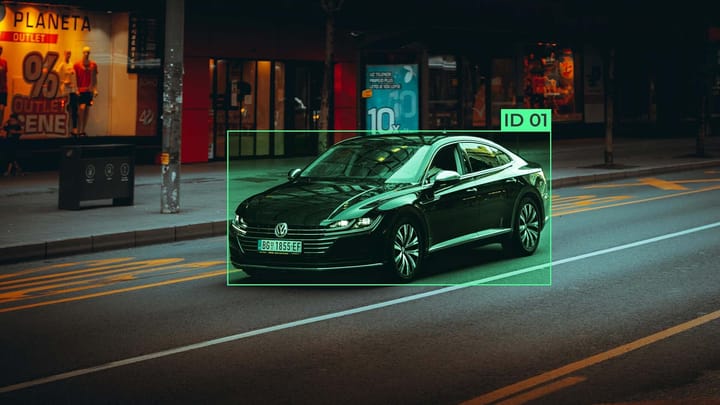Edge AI Model Optimization for IoT Devices: Best Practices in 2025

In 2025, the demand for intelligent, autonomous decision-making on low-power endpoints continues to reshape the landscape of edge computing. AI models are no longer confined to cloud infrastructure; they're now embedded within millions of IoT devices, from smart cameras to wearable health monitors. To ensure these devices operate efficiently under strict performance constraints, developers must adopt advanced strategies beyond traditional training workflows.
Edge model optimization today involves precise control over inference speed, memory usage, and power draw. Techniques such as model compression and hardware acceleration are no longer optional but central to scalable deployment. As IoT systems become more reliant on NPU integration, optimization practices must also account for varying hardware architectures and instruction sets.
Key Takeaways
- Real-time processing demands require fundamental changes in development workflows.
- Hardware-aware design principles dramatically improve deployment outcomes.
- Memory footprint reduction enables complex operations on basic hardware.
- Early-stage planning prevents costly redesigns in production environments.
- Cross-disciplinary collaboration unlocks novel efficiency breakthroughs.
Introduction to Edge AI and IoT Model Optimization
Edge AI refers to deploying artificial intelligence models directly on devices located at the network's edge, close to where data is generated. In the Internet of Things (IoT) context, this shift enables real-time decision-making without relying on constant cloud connectivity. Devices equipped with embedded intelligence can now analyze sensor inputs, recognize patterns, and respond instantly while operating under strict resource constraints.
Optimizing AI for such environments involves more than reducing file size. Developers must implement targeted strategies such as model compression to shrink neural networks without sacrificing accuracy, while leveraging hardware acceleration to maximize the capabilities of device-specific processors. Increasingly, modern IoT hardware features NPU integration, allowing for dedicated neural computation with lower energy overhead.
Designing for Constrained Environments
IoT devices operate under tight constraints, limited memory, low processing power, restricted battery life, and often intermittent connectivity. Designing AI models for such environments requires careful engineering to ensure reliable performance without exceeding hardware limits. Unlike cloud-based systems, edge devices must run inference locally, making efficiency a top priority from the earliest stages of model development.
One of the foundational approaches is model compression, which reduces the size and complexity of neural networks through pruning, quantization, or knowledge distillation. These methods conserve storage and memory and reduce computational load, making real-time inference possible on lightweight hardware. To further boost efficiency, developers rely on hardware acceleration, aligning model architectures with the capabilities of edge-specific components such as DSPs or microcontrollers.
With the rise of specialized chips, NPU integration has become increasingly common in modern IoT devices. These units handle neural operations more efficiently than general-purpose CPUs, enabling high-throughput processing with minimal energy consumption. Coupled with architectural adjustments aimed at latency reduction, such as limiting model depth or simplifying activation functions, these techniques allow AI models to perform effectively even in the most resource-constrained settings.
Performance Through Precision
In edge AI, precision isn't just about accuracy; it's about tailoring every aspect of the model to deliver optimal performance within tight operational margins. Achieving this level of refinement means making deliberate trade-offs that maximize efficiency without compromising functionality. Precision-guided optimization allows AI models to run faster, consume less power, and maintain stability across various IoT hardware platforms.
Model compression is a major contributor to this balance, which streamlines neural architectures by removing redundancy and reducing weight precision. Techniques like quantization shrink the model and align it with low-bit operations supported by many edge chips. This, in turn, improves computational efficiency and enables smoother deployment on devices with limited arithmetic capabilities.
Another critical factor is hardware acceleration. By adapting models to leverage instruction sets specific to GPUs, TPUs, or NPUs, developers can offload processing from general-purpose CPUs and achieve faster inference speeds. In particular, NPU integration allows for dedicated execution of neural workloads, optimizing energy use and throughput. These hardware-aware designs are key to minimizing bottlenecks during real-time operation.
Edge AI Model Optimization Techniques
- Model Compression. Techniques like pruning, quantization, and knowledge distillation reduce model size and complexity. These methods allow neural networks to run on devices with limited storage and compute capacity without significantly impacting accuracy.
- Quantization-Aware Training (QAT). This technique simulates low-precision inference during training, enabling smoother deployment on edge hardware while preserving model performance after quantization.
- Pruning and Weight Sharing. Removing redundant connections and reusing weights in the network helps reduce memory usage and computation, which is essential for running models on microcontrollers or embedded systems.
- Hardware Acceleration. Optimizing models to take advantage of device-specific accelerators like GPUs, DSPs, or NPUs allows faster and more energy-efficient computation, especially when paired with low-level optimization libraries.
- NPU Integration. Leveraging built-in Neural Processing Units provides dedicated pathways for AI workloads, significantly improving inference speed and reducing strain on the central processor.
- Neural Architecture Search (NAS). This automated method helps design lightweight architectures specifically tuned for edge performance, balancing accuracy with compute and memory limits.
- Operator Fusion. Combining multiple operations into a single kernel minimizes memory access and improves runtime efficiency, which is critical for low-latency applications.
Structural Simplification Approaches
- Pruning. Eliminating redundant or less essential neurons, filters, or layers from a neural network reduces model size and computation. This selective removal helps achieve latency reduction without severely impacting accuracy.
- Layer Fusion. Combining consecutive operations, such as convolution followed by batch normalization, into a single, optimized layer reduces the number of computations and memory accesses, boosting runtime efficiency on edge hardware.
- Depth and Width Reduction. Designing models with fewer layers (depth) or narrower layers (width) simplifies the architecture. This decreases computational load and power consumption, facilitating deployment on resource-constrained IoT devices.
- Replacing Complex Operations. Substituting heavy operations like standard convolutions with lightweight alternatives such as depthwise separable or group convolutions maintains model expressiveness while lowering computation.
- Early Exit Mechanisms. Allowing models to produce predictions at intermediate layers enables faster inference when complete processing is unnecessary, significantly improving latency reduction for time-sensitive edge applications.
- Network Architecture Search (NAS) with Constraints. Automated design processes that prioritize simpler, hardware-friendly architectures ensure models are well-suited to the capabilities of target edge devices, especially those with NPU integration.
Impact of Model Optimization on Device Performance
Effective model optimization directly enhances the overall performance of IoT devices by enabling faster, more efficient AI inference within strict hardware limits. Techniques like model compression reduce memory usage and storage requirements, allowing devices with limited capacity to run complex neural networks without lag or failure.
Leveraging hardware acceleration and NPU integration ensures that AI workloads are executed on specialized components designed for neural computations. This speeds up processing and lowers energy consumption, extending battery life in portable and remote IoT devices.
Moreover, focused efforts on latency reduction improve real-time responsiveness, which is crucial for autonomous navigation, predictive maintenance, and health monitoring applications. Reduced inference delays mean decisions can be made instantly, increasing safety, accuracy, and user satisfaction.
Latency Reduction and Faster Inference Speed
Reducing latency is critical for edge AI applications where real-time responsiveness directly impacts functionality and user experience. Optimizing models to achieve faster inference speeds involves a combination of software and hardware strategies designed to minimize processing delays on resource-constrained IoT devices.
Techniques such as model compression streamline neural networks by eliminating unnecessary parameters and simplifying computations, reducing the time needed for each inference. Hardware acceleration harnesses the power of specialized processors, such as GPUs, DSPs, or dedicated NPUs, to perform neural operations more efficiently than general-purpose CPUs.
The growing adoption of NPU integration in IoT devices provides dedicated pathways that handle AI workloads with lower power consumption and higher throughput, further shrinking latency. Additionally, software-level optimizations like operator fusion and platform-specific compilation translate model architectures into highly efficient executable code tailored to the target hardware.
Balancing Trade-offs: Accuracy Versus Efficiency
Striving for maximum precision often increases model complexity, leading to higher memory consumption, longer inference times, and greater energy use challenges that can hinder deployment on edge devices.
Techniques like model compression and precision adjustment help reduce size and computational demands but may introduce slight accuracy drops. Developers must evaluate whether these trade-offs affect the end application's effectiveness and safety, especially in critical domains like healthcare or autonomous systems.
Leveraging hardware acceleration and NPU integration can mitigate some compromises by boosting processing speed and energy efficiency without degrading accuracy. However, even with specialized hardware, overly complex models may cause bottlenecks or excessive power consumption.
Evaluating Accuracy Impacts
Assessing how optimization techniques affect model accuracy is essential to ensure that efficiency gains do not come at an unacceptable cost to performance. Methods like model compression or quantization can introduce errors or reduce the model's generalization ability, especially if applied too aggressively.
Thorough evaluation involves testing optimized models against representative datasets to measure changes in key metrics such as precision, recall, or overall accuracy. This process helps identify whether the trade-offs made during latency reduction or precision adjustment remain within acceptable limits for the application.
Cross-validation and real-world scenario testing are also important, as some accuracy drops may only become evident under specific conditions or edge cases. When accuracy degradation is detected, techniques like retraining with quantization-aware methods or fine-tuning simplified architectures can help recover performance.
Summary
Optimizing AI models for edge deployment on IoT devices in 2025 demands a strategic blend of techniques focused on model compression, hardware acceleration, and NPU integration. These approaches enable significant latency reduction and faster inference speeds, essential for real-time applications within resource-constrained environments. Structural simplification and precision adjustment methods help balance the trade-offs between accuracy and efficiency, ensuring models remain effective while fitting the limitations of edge hardware. Careful evaluation of accuracy impacts ensures that optimization gains do not compromise performance, supporting robust, scalable AI solutions that power the growing ecosystem of intelligent IoT devices.
FAQ
What is model compression and why is it essential for edge AI?
Model compression reduces the size and complexity of AI models to fit IoT devices' limited memory and compute capacity. It enables efficient inference by lowering resource usage while maintaining acceptable accuracy.
How does hardware acceleration improve AI performance on IoT devices?
Hardware acceleration uses specialized processors like GPUs, DSPs, or NPUs to execute neural network operations faster and more energy-efficiently than general-purpose CPUs. This leads to significant improvements in inference speed and power consumption.
What role does NPU integration play in edge AI model optimization?
NPU integration provides dedicated neural processing capabilities within IoT devices, enabling optimized execution of AI workloads. This supports faster inference and lower energy use, which is critical for real-time edge applications.
Why is latency reduction crucial for AI deployed on IoT devices?
Latency reduction ensures that AI models process data and produce results quickly, enabling real-time responsiveness in applications such as autonomous navigation or health monitoring. It is key to maintaining performance in resource-constrained environments.
What are some standard precision adjustment methods in edge AI?
Precision adjustment methods include post-training quantization, quantization-aware training, mixed-precision inference, and binarization. These techniques reduce computation and memory needs by lowering numerical precision while preserving model accuracy.
How does structural simplification aid in optimizing AI models for edge devices?
Structural simplification involves pruning, layer fusion, and replacing complex operations with lightweight alternatives to reduce model size and computation. This helps achieve faster inference and lower power consumption on limited hardware.
What is the trade-off between accuracy and efficiency in edge AI?
Increasing model efficiency through compression or simplification can lead to some accuracy loss. Balancing this trade-off is critical to ensure models remain reliable while fitting within IoT devices' hardware and latency constraints.
How can accuracy impacts from optimization be effectively evaluated?
Accuracy impacts are evaluated by testing optimized models on representative datasets and real-world scenarios. Cross-validation and quantization-aware retraining help maintain performance after compression or precision adjustments.
What is the benefit of combining hardware acceleration with model compression?
Combining hardware acceleration with model compression maximizes inference speed and energy efficiency. Compression reduces the model's resource demands, while acceleration ensures optimized execution on specialized processors.
Why is platform-specific compilation essential in edge AI optimization?
Platform-specific compilation translates AI models into hardware-optimized binaries tailored to the target device. This process leverages NPU integration and hardware features to improve runtime efficiency and reduce latency on IoT devices.



Comments ()